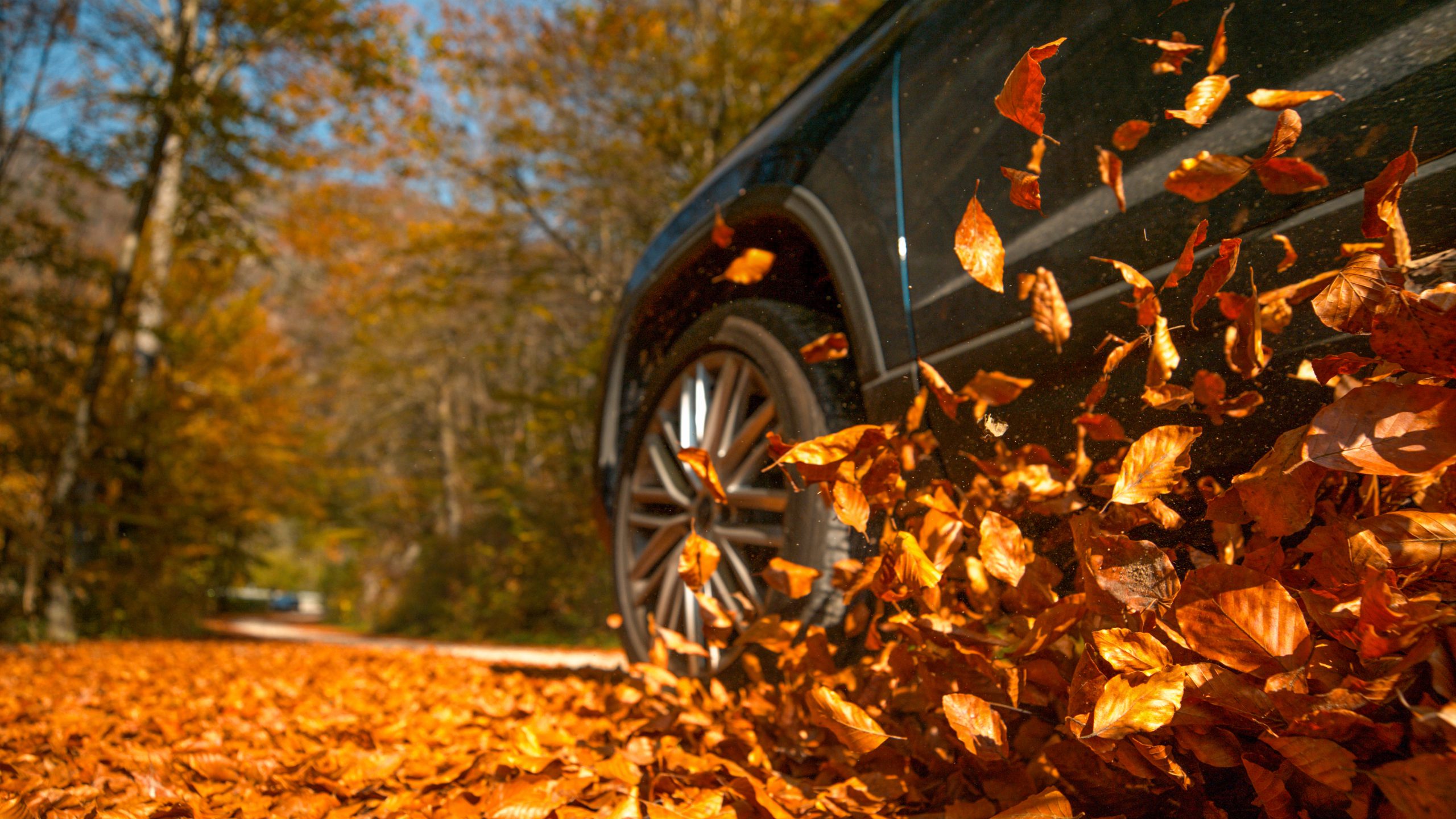ADVICE YOU CAN USE
How to Avoid Autumn’s Driving Pitfalls
Preparing for fall’s unpredictable road conditions.

Autumn’s greatest threat to motorists is the element of surprise. Here’s how to prepare for fall’s changing driving conditions.
Autumn is a time for changing leaves, stunning colors, and crisp temperatures. Despite its majesty, fall weather can be unpredictable. Its seasonal changes can affect driving conditions and increase the risk of accidents. While many consider winter a hazardous time on roadways, the annual transition from summer to autumn can catch even the safest drivers off guard.
With that in mind, here are recommendations for staying safe while driving in the fall.
Prepare for later sunrises and earlier sunsets.
From now until the end of autumn, days will become increasingly shorter. As a result, the sun appears lower in the sky during morning and evening rush hours, and the resulting glare makes driving visually tricky.
Keeping your windshield clean and free of streaks and smudges can help combat the glare from a sunny horizon. And don’t get caught without sunglasses when driving in the fall.
Remember, the earlier dusk and dawn darkness can sneak up on you, making it suddenly challenging to see children playing outdoors, crossing streets, or walking to and from school bus stops. Slow down to give yourself more time to stop.
Beware the night.
Autumn brings the end of Daylight Savings Time and increased nighttime driving. And according to the National Safety Council, half of all traffic fatalities occur at night.
Driving at night is dangerous because darkness limits visibility and diminishes our depth perception, peripheral vision, and color distinction. What’s more, headlight glare from oncoming traffic can daze drivers. Those factors can impact your ability to react in unsafe situations.
Our bodies associate darkness with sleep, so it’s natural to feel drowsy driving during evening commutes—especially in the wake of Daylight Savings Time’s end. Make sure you are well rested and avoid driving when tired.
Slowing down can compensate for reduced visibility and shorter stopping times.
Watch out for fog.
Fog often accompanies cool morning temperatures, making it harder to see and be seen on the road. Slow down to adjust for reduced visibility while keeping plenty of distance between your car and other vehicles.
Turn on your headlights, even during daytime fog. However, resist the urge to use your high beams because dense fog can cause the higher-angled light to reflect at you and create unanticipated glare.
Use your vehicle’s windshield wipers and defroster to keep your glass moisture-free.
Be on the lookout for deer.
Autumn is deer breeding season, leading adult deer to wander looking for mates. As a result, accidents related to striking a deer are twice as common in mid-autumn than any other time of year.
Deer are most active at dawn and dusk and often travel in groups. Watch for movement along roadsides and anticipate one or more deer crossing your path. If you encounter a deer on the road, strive to brake rather than swerve to avoid contact with other traffic.
Stay alert for slippery conditions.
Fallen leaves can be dangerous on roadways by decreasing tire traction and inducing skidding. Wet or icy leaves create slippery conditions. And piles of leaves at curbs can hide edge lines or potholes.
As temperatures drop to freezing levels, roads become icy. Remember that bridges and highway overpasses freeze more quickly than other road surfaces. Unlike typical road surfaces exposed to air only from above, bridges and overpasses get exposed from underneath and on both sides.
Drivers traveling at normal speeds on clear roads can get caught off guard and lose control. And collisions happen much faster in slippery conditions.
Potential driving hazards, such as slippery roads, less daylight, fog, and sun glare, accompany the beginning of fall. Knowing how autumn conditions impact road safety can reduce your risk. And watching your driving speed can give you more time to react to possible dangers.

